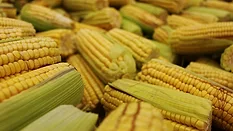
Packaging
Packaging food safety concerns include the materials of construction for packaging and all food contact surfaces, as well as the labeling information on the packaging.
Articles
More ArticlesPodcasts
More PodcastsNever miss the latest news and trends driving the food safety industry
Newsletters | Website | eMagazine
JOIN TODAY!Copyright ©2026. All Rights Reserved BNP Media.
Design, CMS, Hosting & Web Development :: ePublishing



